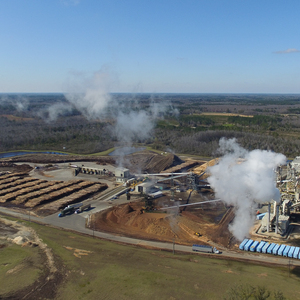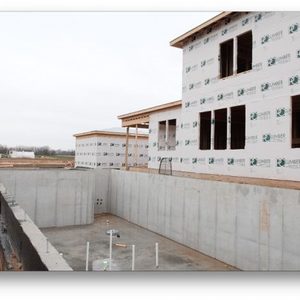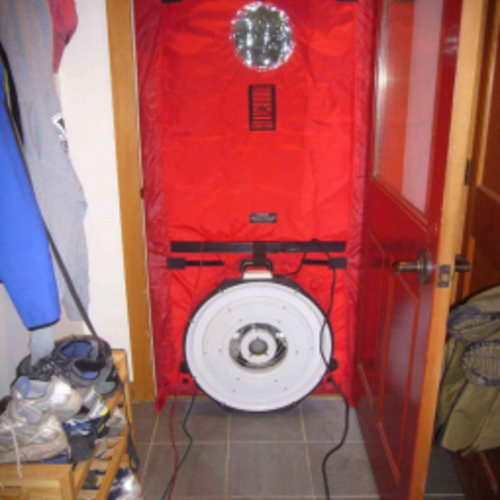
Clearing trees is often the first step in building a house on a rural lot. The process can result in a surprising amount of logs, limbs, and brush—only some of which has any commercial value.
That’s the situation that Longstory describes in this recent Q&A post. After putting in a road to the building site on his 14-acre lot in central Tennessee, Longstory had a big pile of wood and not much to do with it.
“Due to market conditions only about 20 hardwood trees were of a size and grade to take to a mill (which was luckily only 3 miles from the site),” he writes. “The only species that brought any return was white oak, which is needed for whiskey barrels. The rest were highly discounted and the sale was only around $1,000. The other smaller trees and slash were left in a large pile out of the way that is pretty darn large.”
Now he’s clearing additional trees on the house site. There aren’t enough big trees to cut and transport to the mill, so his contractor is proposing that he burn what’s cut down. And how does he get those brush and wood piles burning? The secret is using old tires to get things started.
“I was not sure how to respond,” Longstory says, “but I know that burning tires is not a good practice or likely even legal. But this is Tennessee. Can anyone help with a better way to burn a pile resulting from site clearing?”
What to do with unwanted trees and vegetation is where we start this Q&A Spotlight.
First, you don’t need to use old tires
Longstory isn’t the first person to hear about the old tire secret. Loaded with newspaper and kerosene, tires…
Weekly Newsletter
Get building science and energy efficiency advice, plus special offers, in your inbox.

This article is only available to GBA Prime Members
Sign up for a free trial and get instant access to this article as well as GBA’s complete library of premium articles and construction details.
Start Free TrialAlready a member? Log in















21 Comments
Consider making biochar. https://en.wikipedia.org/wiki/Biochar
The soil fertility possibilities with biochar are quite amazing. This is just another (good) form of recycling.
This may be great in terms of improving some soil or sequestering carbon. But do you really consider the biochar process to be a green and environmentally friendly one? And I'm not sure how anything is recycled, as in reused. Carbon is being sequestered but chipping and mulching will do that too.
How bizarre that another option, arguably the most environmentally benign, goes completely unmentioned. In essence, do nothing at all.
Leave the brush in a pile in an out-of-the-way corner, where it can provide habitat for wildlife of all kinds, including not just animals, but things like fungi.
It's true that as the wood rots down some gases will be released back into the atmosphere. But much less so if it's deteriorating at a natural rate while it's actually being consumed and used by all kinds of other creatures and natural processes.
Sometimes the best thing we can do is just get out of Nature's way.
I've accumulated a fair amount of brush from trees falling over in storms. I cut into manageable pieces and dump them onto an out of the way pile. Easy and cheap.
I like your suggestion best, and am doing that myself. For better or worse, the neighborhood groundhog appreciates the protection this affords for the entrance to her den. Just to give credit where credit is due, Scott does quote Michael Maines suggesting that, right under the heading "Don’t burn it at all". It's easy to miss because it's such a simple and useful suggestion that it doesn't get much discussion. The only limitations on it that I see are, on a small lot, aesthetics and creating habitat for animals you might consider pests, or, in a wildfire-prone region, providing fuel for fires too close to the house.
Note that, if needed, lopping branching limbs into straight segments can make the pile a lot smaller without needing to go all the way to chipping it.
Thanks for the mention, Charlie. I have somewhere around a dozen brush piles on my property and they can be eyesores; at some point I'll rent a chipper and get rid of some of the piles. I also have a few of what I call "poor man's hugelkulture," simply arranging brush in rows along a slope where as it decomposes it will create a berm.
I should have mentioned that I also bought an electric chipper and I chip some of it rather than piling all of it. That's partly to reduce the pile volume and partly to produce wood chips used for landscaping.
An electric chipper is too slow to consider for the original purpose of disposing of a large amount generated by clearing a lot, but the one I have works OK for keeping up with some of what falls and what I prune. The Patriot brand are the best easily available in the US. I was lucky enough to find a used one for a bargain price nearby. It's a lot more powerful than the other brand I had tried, although it's still limited by the choice to use a conventional 120 V 15/20 A circuit.
Good to know! My main reason for not buying one in the near future is because I don't need encouragement to spend more time in the woods and less time at my desk ;-) But someday I'm sure I'll get one.
Yes, I appreciate that Michael Maines raised the point. I didn't miss it on my first reading. However, the article devoted just 1 sentence to it and failed to get into any detail about WHY it should be considered as an option.
I have a neighborhood hedgehog too. My garden is fairly small. But I've also arranged a strip a few feet wide along one side, which I'm hoping will serve as the kind of habitat that will support hedgehogs and other ground nesting creatures. I've also planted some trees to provide more nesting for small birds, who have suffered a lot in recent decades.
“[Deleted]”
“[Deleted]”
Could check for local mushroom growers, who use logs as a medium.
I feel I should clarify some of my statements, which were a bit offhand.
1) There are definitively advantages to leaving debris to rot vs burning. My professional life involves managing thousands of acres of conservation land where we occasionally conduct commercial timber operations. I am not the forester or logger, but the type of forestry we strive for is very much the 'leave the slash on the floor' type. https://ecosystems.psu.edu/research/centers/private-forests/news/slash-what-good-is-it
Some argue that slash should (if it can) go to biomass. It may not be a clear cut answer, but there are undeniable benefits to leaving low slash in a logging operation.
When I logged for several winters, we left the slash in the woods and we worked to get it LOW to the ground to speed it's reentry into the soil and better protect the soil from increased exposure. But we did occasionally have small burns at the field edges to clean up the landing. More recently, I have cleared the understory of a 1.5 acre pine stand and we managed to create a behemoth brush row. Great for wildlife and it will rot, but it was a bit of a challenge to find a place to put 1.5 acres worth of understory (it was a young understory, and the larger trees did go to firewood).
My offhand statement about methane and traditional burning regimens was mostly one of practicality for lot openings or field management: stashing a giant pile of brush may not be an option in every situation, and so how unreasonable is burning in those situations? I am sure the carbon release is worse than stock piling, but my point was that there is another side to the coin which may help alleviate some of the 'awfulness' of burning if stockpiling is off the table. Chipping and other mechanical operations can burn up a good bit of fuel--I'm not sure how the numbers work out on that.
2) As far as the mechanics of burning: I agree with DC's tips. My point was that it's easier than one might think to end up with a smoking, frustrating-to-manage pile of smoldering wood. It's very condition dependent, and it can be difficult if the pile was pushed together without burning in mind and left to gather (and not release) moisture, or not stacked with the right density, etc. There's a reason, after all, that some people resort to things like burning tires! A good burn is totally possible, it may just take some forethought and patience under certain conditions. I would never recommend a very large burn without equipment on site. I have used the leaf blower trick, and it does work! But it doesn't make up for lack of proper prep or pile geometry.
3) While forestry mulchers can be pretty expensive, if one values their time (or has less of it than capital I should say), it may not be a terrible option. Depends on how common forestry mulching is in the area probably. It only makes sense for certain size trees, and they should still be standing (so too late in this case), but these machines will have efficiency tough to match by toiling with a tiny tractor chipping or burning when the scale is large. They can also mulch stumps down if you're willing to leave their root system intact-- a benefit for soil stability. Pulling stumps presents an entirely new challenge. Much harder to burn. It's common around here to see stump dumps. If you have a lot of patience, you can even consider leaving stumps in place for a long while to rot, then come back later to pull them and they will take far less soil with them.
On stumps, what if you have enough patience to leave them in place for a longer time and never come back to pull them?
Charlie,
I've got a cedar stump on my property that is over 60 years old. You can still see the notch for the springboard they stood on to fall it.
Let's not forget that a 60 year old stump is 60 years of sequestered carbon.
Yeah, stumps are way harder to deal with than trunks and branches. If you're creative enough, this is one solution:
https://gardenerstips.co.uk/blog/articles/create-a-stumpery-from-tree-roots-and-stumps/
Or this one:
https://thegardenstrust.blog/2015/05/02/stumperies/
Peter,
Back in my early years of doing trail work, after pulling 'somewhat sizeable' stumps with a hand powered griphoist (winch) I could not bear to just toss the fruits of my labor into the woods. So I 'planted' the stumps upside down along the trail as a sort of ornament. They look pretty neat if you ask me.
Ok, in reality I only did that a few times because most people didn't want to see a littering of stumps along the trail. Out of sight out of mind--and as far as your average hiker is concerned, trails just 'exist.'
Good Luck. It is great you are considering these issues and trying to do the right thing..... Life is so much easier when we ignore the externalities of our actions and do what we want. It is challenging to be a good steward of the earth.... but it is a challenge we should not ignore.
The hügelkultur raised bed suggestion souinds interesting, in part because any veggies grown on your property means that much less that you have to import from somewhere else. This is especially important in a world where water and fertile land are getting scarcer by the minute...
In the Rwandan village where my group works very little is wasted because there is so little land per person and much of the land cannot be used to grow food. People are very careful not to waste things and you would be surprised how much is put to use when a forest area is cleared (although we are trying to offer alternatives to clear cutting existing forest areas wherever we can). Mulch piles are a very important part of the strategy to increase crop production.
If we had a "like" button I would be clicking it for this comment.
Log in or become a member to post a comment.
Sign up Log in